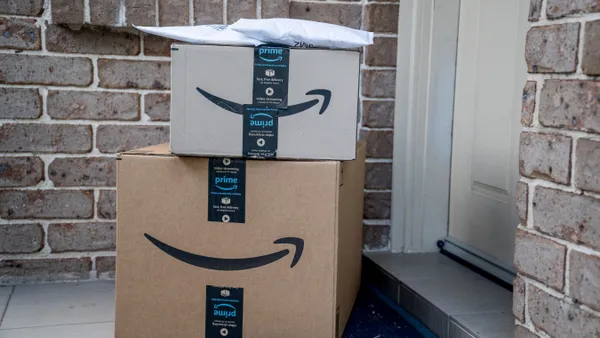Dive Brief:
-
Global luxury retailers' earnings growth could nearly double in this year to 7% from 4% last year, but it's unlikely to reach the double-digit levels the sector enjoyed between 2010 and 2013, according to a report released Thursday by Moody's Investors Service and emailed to Retail Dive.
-
Growth will likely slow during the second half of this year as the comparison basis becomes tougher, Moody’s analysts said. Luxury companies are adapting their operations amid high competition and rising fashion risk, with some changes bolstering credit and others constraining it, Moody’s said. Analysts expect the credit quality of most luxury goods companies to strengthen in the next 12 to 18 months along with earnings growth acceleration.
-
But mergers and acquisitions by some of the stronger retailers could hit credit ratings, according to the report. For the report, Moody's analysts studied 11 brands: LVMH Moët Hennessy Louis Vuitton SE, Kering Group, The Estée Lauder Companies, Ralph Lauren Corporation, Tiffany & Co., PVH Corp., Shiseido Company, Ltd, Safilo S.p.A, SMCP Group, Marcolin S.p.A and TWIN SET-Simona Barbieri.
Dive Insight:
Rising competition and department store struggles are pushing many luxury brands to boost their efficiencies, including closing their own stores as well as exiting department stores, Moody’s said in the report. But it's a tricky business, as consumer preferences and willingness to spend have changed in recent years.
“Limited earnings growth prospects are exacerbating competition and companies must increasingly fight for market share,” according to the report. “Companies must find the right creative directors while allocating their resources more efficiently. An added challenge for U.S. companies such as Ralph Lauren is to reduce their reliance on department stores where footfall is declining and promotional discounting weakens brand value.”
While pulling back on brick and mortar will free up cash, much of that will go to improving online operations and refurbishing their large store portfolios, Moody’s said. Some companies will fare better than others, and for different reasons, depending on which sector they’re in, the status of any restructuring strategies and the diversity of merchandising, according to the report.
“We expect jeweler Tiffany's, and apparel, home, accessories and fragrance company Ralph Lauren's EBITDA to decline or stagnate during the next 18 months, with Ralph Lauren shifting toward growth in the latter half of the period as it begins to realize the benefits of its restructuring program,” Moody’s analysts noted, by way of example. “Nearer term pressure stems from a strong dollar, the ongoing decline of department stores and company specific operating issues. However we believe these companies will maintain stable gross leverage ratios by cutting capital spending and shareholder remuneration. Cosmetics brand Estée Lauder should perform well thanks to its international diversification and its portfolio of well known brands.”
In addition to the strong dollar, luxury brands continue to face other pressures, including slowing growth in China and consumers’ continued preference to prioritize their budgets for food and travel, the report said, citing research from consulting firms Bain and Altagamma that found the personal luxury goods market contracted by 1% in 2016 while luxury hospitality and luxury food each grew 4%.
“While Chinese consumers will continue to drive growth, most of the new demand is coming from the middle class whose spending power is lower than early adopters,” Moody’s said. “However this trend could favor companies positioned in the ‘accessible’ luxury segment, such as French apparel retailer SMCP, which offers products at lower price points than the high-end labels.”
In this environment, luxury retailers will be hard-pressed to boost prices to yield the fat margins of old, and Moody’s analysts chalked that up to restrained consumers and the ability to compare prices online. “Consumers are becoming more value conscious and rising online sales have improved price transparency,” according to the report. “As a result, companies now intend to reduce price differentials across geographies and particularly in China where luxury products are more expensive than in Europe.”














